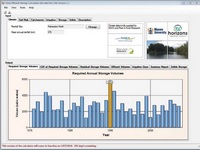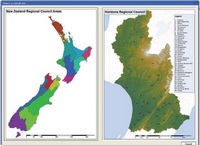Your Dairy Effluent WOF
An outline of the assessment and what you will receive
- View farms effluent consent or permitted rules (are all requirements being met)
- View nutrient budget (checking nitrogen loadings)
- Run the dairy effluent storage calculator to estimate if sufficient storage for farm system
- Assess all catchment areas, particularly stand-offs & feedpads
- Application depth and rate test of irrigation system
- Dig a test pit to observe soil risk
- Hazard identification and general Health and Safety are noted
Risk assessment across 22 standards
The risk assessment framework has been developed from an AgResearch risk assessment study, modeling different effluent infrastructure and on-farm management scenarios. This estimates the environmental impact of various defects in systems and assigned scores and weighting to the risk assessment.


Dairy effluent storage calculator results
The Dairy Effluent Storage Calculator is a software tool which looks at a farm’s inputs of soil risk in the effluent block, catchment areas, feedpads or barns and their use; wash water in the dairy, effluent irrigation depths, and the daily volume of effluent able to be irrigated.
The Dairy Effluent Storage Calculator hold 30 plus years of local rainfall and evapotranspiration data, and from there it calculates a daily soil water balance to determine how often effluent irrigation could occur, or if conditions are unsuitable how much effluent should be directed to storage.
Graphs show maximum storage volume required for each season over the last 30 years.
The storage calculator is great for checking existing pond volumes if there is a pond already on farm, or determining pond volumes for new systems, and for running scenarios to compare the different inputs to find out where the farmer gets the best value.
What sort of advice will my report contain?
The WOF report is delivered following the 3-4 hour assessment.
The WOF report shows detail from each of the Risk Assessment Standards, application rate graphs, and other statistical information about the farm’s effluent systems.
The WOF report helps you understand all the requirements to make sure your system is fit for purpose and capable of being compliant 365 days a year, or can be used by 3rd parties such as banks, valuers, purchasers, or shareholders.
View Sample Report
Area of risk | Why of concern | Suggested action |
|---|---|---|
High application depth | Average depth applied greater than allowed in WRC rules. | Repair and maintain irrigation |
Siphoning and ponding at first irrigator | Ponding can occur breaching WRC rules. | Ensure irrigator is moving after pump turned on. Repair. |
Sludge piles on unsealed surface | Average depth applied greater than allowed in WRC rules. | Place stone trap cleaning on a sealed surface that drains to the effluent system. |
Pump quite noisy | If it is not working well, irrigator performance may decrease. Risk of catastrophic failure & damage to pump and motor. | Have pump serviced or checked out. |
Camlocks fitted to drag hose in incorrect direction | The Camlock legs get damaged when line is moved, also they could catch and uncouple the hose while irrigating. | Re-fit the correct way so that the "legs" are not being pulled. |

